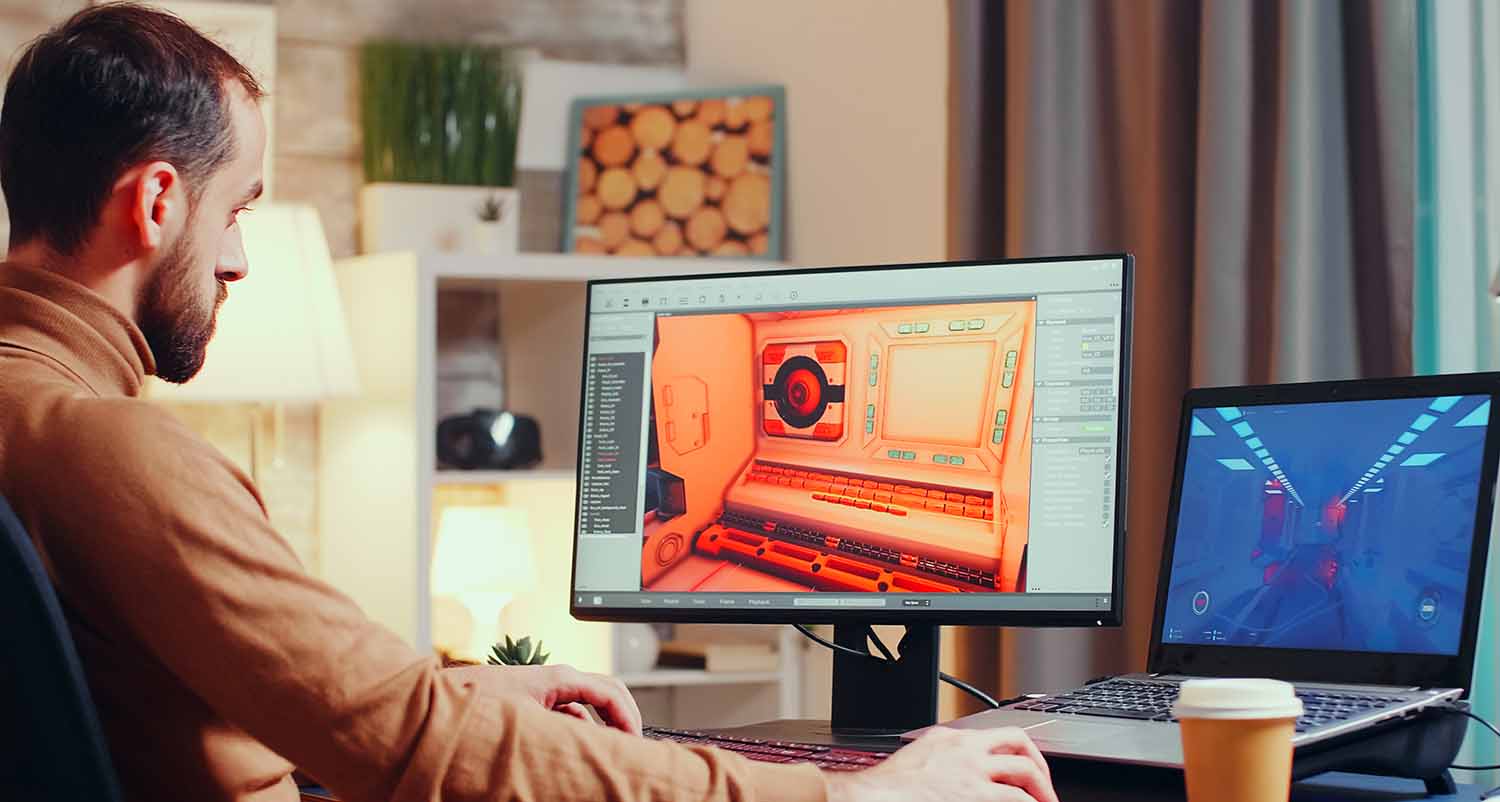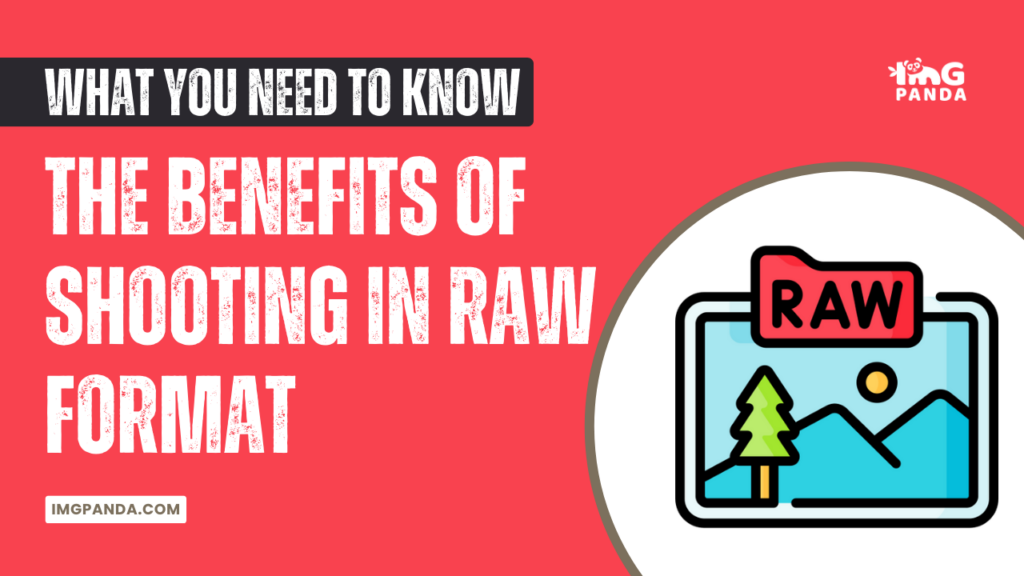Warning: Undefined array key 8 in /home/imgpanda.com/public_html/wp-content/themes/astra/template-parts/single/single-layout.php on line 176
Warning: Trying to access array offset on value of type null in /home/imgpanda.com/public_html/wp-content/themes/astra/template-parts/single/single-layout.php on line 179
Introduction
Photography is a popular hobby and profession that has seen significant advancements over the years, especially in the area of digital photography. One of the most important choices a photographer makes is the format in which they shoot their images. While JPEG is the most common format used by many photographers, shooting in RAW format can provide several benefits that can enhance the quality and flexibility of your images.
In this article, we'll explore the advantages of shooting in RAW format, and why it's worth considering for your photography workflow.
Also Read This: How to Make Caramel Sauce at Home
Greater Control
One of the main benefits of shooting in RAW format is the greater control it gives you over the final image. RAW files contain much more information than JPEG files, which means you can adjust settings like exposure, white balance, contrast, and saturation after the fact without losing quality. This is because RAW files retain all of the data captured by the camera's sensor, giving you more room to adjust and fine-tune the image.
For example, if you take a photo in bright sunlight and the image turns out too dark, you can use editing software to increase the exposure and recover more detail from the shadows. If you shoot in JPEG format, however, you may lose quality in the process as the file has already been compressed and some data has been discarded.
The greater control that RAW format provides also allows you to make more selective adjustments. You can adjust specific areas of the image without affecting others, such as correcting the white balance of just one part of the image. This level of control allows you to create a final image that more accurately represents your vision for the scene you captured.
[caption id="attachment_192665" align="alignnone" width="1500"] Greater Control[/caption]
Greater Control[/caption]
Also Read This: How Did Anthony "Rumble" Johnson Pass? An In-Depth Tribute to His Life and Career
Better Image Quality
Another significant advantage of shooting in RAW format is the higher image quality that it can provide. RAW files contain more data than JPEG files, which means they can produce images with better detail, less noise, and greater dynamic range. This is especially important when shooting in low light or when using high ISO settings, as RAW files can capture more information in these situations.
When you shoot in JPEG format, the camera applies compression to the image, which can result in some loss of quality. This can be particularly noticeable in areas with high contrast or in images with a lot of detail. RAW files, on the other hand, are not compressed, so you can process the image without any loss of quality.
RAW files also allow you to recover more detail from overexposed or underexposed areas of the image. This is because RAW files contain more data in the highlights and shadows, which can be adjusted separately. By adjusting the exposure or using tools like the highlight recovery or shadow fill, you can bring back more detail in these areas of the image.
Overall, shooting in RAW format can result in higher-quality images that contain more detail and less noise, making it an excellent choice for photographers who want to achieve the best possible image quality.
[caption id="attachment_192666" align="alignnone" width="1500"] Better Image Quality[/caption]
Better Image Quality[/caption]
Also Read This: Viewing project appreciation on Behance
Flexibility
Shooting in RAW format also provides greater flexibility in post-processing. With RAW files, you can apply different adjustments to different parts of the image, allowing you to selectively edit specific areas or colors. This level of flexibility can help you achieve a more creative and polished final image.
For example, if you have an image with a brightly lit sky and a dark foreground, you can use a tool like a graduated filter to adjust the exposure of the sky separately from the foreground. Similarly, you can use selective adjustments to enhance or tone down specific colors in the image, such as making the reds more vibrant or reducing the saturation of the greens.
In addition, because RAW files are non-destructive, you can always go back to the original file and start over if you don't like your edits. This is not possible with JPEG files, which are compressed and lose quality with each edit. The ability to make changes without losing quality or information is a significant advantage of shooting in RAW format.
Overall, the flexibility provided by RAW format allows you to make more precise and creative adjustments to your images, resulting in a final product that better represents your vision for the scene you captured.
Also Read This: Resolving Fortiguard Downloader Server Connection Issues
Non-Destructive Editing
Because RAW files are non-destructive, you can always go back to the original file and start over if you don't like your edits. This is not possible with JPEG files, which are compressed and lose quality with each edit. When you edit a JPEG file, you are permanently changing the data, which means you can only go back so far before the quality starts to degrade.
Non-destructive editing provides a significant advantage when it comes to post-processing. It allows you to experiment and try different edits without fear of losing the original image or degrading its quality. You can create multiple versions of the same image with different edits and compare them side-by-side to see which one you like best.
Overall, shooting in RAW format and using non-destructive editing can give you more confidence and freedom when it comes to editing your images. Yu can experiment and explore your creativity without fear of permanently altering the original data.
Also Read This: How to Identify Scammers on Telegram
Archiving
Another benefit of shooting in RAW format is that it is an excellent choice for archiving your images. RAW files are the most complete and accurate record of the data captured by your camera's sensor, making them an excellent source file to store for the long term.
Because RAW files are non-destructive and contain all of the original data, they can be used to create high-quality JPEGs or other file formats as needed. This means that if you want to print or share an image, you can create a new file in the desired format without losing any quality or information.
In addition, RAW files are typically supported by most image editing software, which means they are unlikely to become obsolete anytime soon. This makes RAW files a reliable and future-proof format for archiving your images.
Overall, shooting in RAW format and archiving your RAW files can help ensure that your images are preserved for the long term, with no loss of quality or information.
[caption id="attachment_192667" align="alignnone" width="1500"] Non-Destructive Editing[/caption]
Non-Destructive Editing[/caption]
Also Read This: How to Use Web Tools to Conduct Market Research
Customization
Shooting in RAW format also allows for greater customization when it comes to the processing of your images. Because RAW files contain more data than JPEG files, you have more control over the final image. This means that you can adjust settings like white balance, contrast, saturation, and sharpness to your liking, without being limited by the camera's default processing settings.
For example, if you shoot in JPEG format, the camera applies its processing settings to the image before it is saved. This means that you have less control over the final image, and you may not be able to achieve the look you want. With RAW files, on the other hand, you can adjust the processing settings yourself, allowing you to create a custom look that is unique to your style.
Customization can be particularly important for photographers who have a distinct style or who want to achieve a specific look for their images. By shooting in RAW format and customizing the processing settings, you can create images that are truly your own and stand out from the crowd.
Overall, shooting in RAW format allows for greater customization when it comes to processing your images, giving you more control over the final product and allowing you to create a unique look that is all your own. Here's a video discussing the reasons for shooting in RAW format.
Also Read This: Behind the Scenes: Exploring Shutterstock Employee Count
Pros & Cons
| Pros | Cons |
|---|---|
| 1. Maximum image quality: RAW files capture all the data from your camera's sensor, which means you have access to the maximum image quality and details. | 1. Larger file sizes: RAW files are typically larger than JPEGs, which means they can take up more storage space on your memory card and hard drive. |
| 2. Flexibility in editing: RAW files provide more flexibility in post-processing because they allow you to adjust exposure, color balance, and other settings without degrading image quality. | 2. Requires post-processing: RAW files require post-processing in order to produce usable images, which can be time-consuming and require specialized software. |
| 3. Ability to recover lost detail: RAW files allow you to recover lost detail in overexposed or underexposed areas that would otherwise be lost in a JPEG file. | 3. More complex workflow: Working with RAW files can be more complex than working with JPEGs, as you need to convert them into a usable format before sharing or printing. |
| 4. Preserves original data: RAW files preserve the original data captured by your camera's sensor, which means you can always go back and make changes to the image later without losing quality. | 4. Not suitable for all situations: Shooting in RAW may not be necessary for every situation, such as when you need to take quick photos |
Overall, while there are some cons to shooting in RAW format, the benefits can outweigh the drawbacks, especially for photographers who value the control, quality, and flexibility that RAW files provide. It ultimately comes down to personal preference and the specific needs of each photographer and their work.
Also Read This: Join Rumble Easily with This Step-by-Step Account Creation Guide
Conclusion
In conclusion, shooting in RAW format offers several benefits for photographers who want greater control, better image quality, flexibility in post-processing, non-destructive editing, archiving, and customization. While there are some downsides to shooting in RAW, such as larger file sizes and longer processing times, the benefits can outweigh the drawbacks for those who prioritize quality and control in their photography. Ultimately, the choice between shooting in RAW or JPEG format will depend on the specific needs and preferences of each photographer and their work.
FAQs
What is RAW format?
A: RAW format is a type of image file that contains all of the raw data captured by your camera's sensor, without any processing or compression.
Why should I shoot in RAW format?
A: Shooting in RAW format offers several benefits, including greater control over the final image, better image quality, flexibility in post-processing, non-destructive editing, archiving, and customization.
What is non-destructive editing?
A: Non-destructive editing is a type of editing where changes are made to a separate file layer on top of the original file, so the original data is not permanently altered.
Do RAW files take up more storage space than JPEG files?
A: Yes, RAW files are typically larger than JPEG files, so they do take up more storage space on memory cards and hard drives.
Do I need special software to edit RAW files?
A: Yes, you will need specialized software to edit and process RAW files, but most image editing software supports RAW format.
Is shooting in RAW format suitable for all types of photography?
A: RAW format may not be suitable for certain types of photography, such as fast-action or continuous shooting, due to the larger file sizes and slower write speeds.
Should I always shoot in RAW format?
A: It depends on your specific needs and preferences as a photographer. If you prioritize control, quality, and flexibility in your photography, shooting in RAW format may be the best choice for you.
